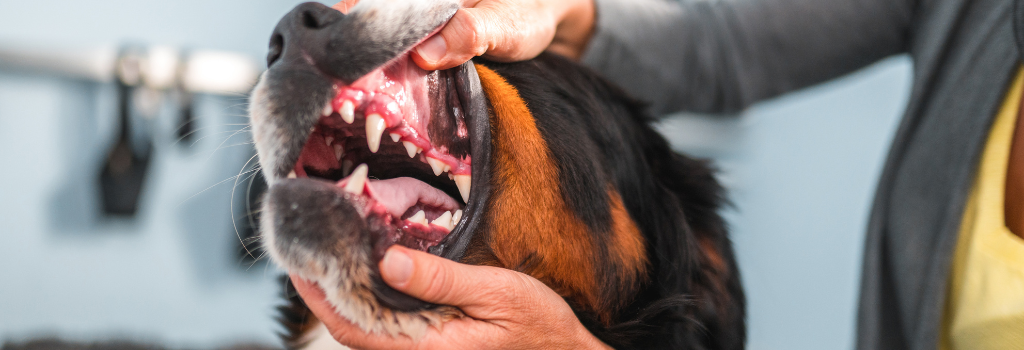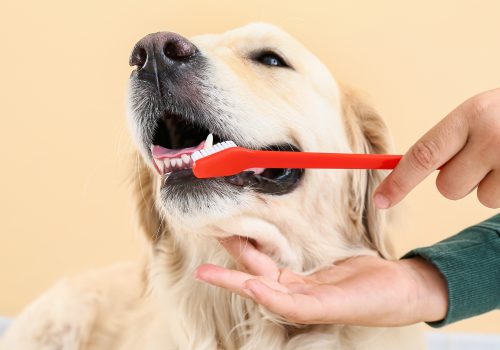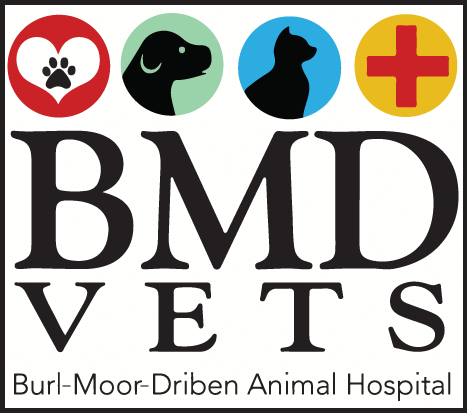As diligent as many dog owners are about everything from parasite prevention to wellness exams, many people discount the importance of dog dental care. Unfortunately, this neglect can lead to more than just a painful mouth, as dental disease can wreak havoc on the entire body. If you suspect your dog has dental issues, you may have turned to the internet for answers. We’re glad you found us! To combat the misinformation you can find online, we’ve answered frequently asked questions on dog dental care and shared those facts with you below.
At Burl-Moor-Driben Animal Hospital, we understand that you need reliable information to make the right decisions for your dog. While the information below is accurate, it’s always best to talk to your own veterinarian about any questions you may have on how to best care for your canine companion. If your dog needs a veterinarian in the South Jersey/Philly Area, we’d be thrilled to help. Give us a call at (856) 409-7179 today to schedule their first appointment.
How does dental health affect my dog's overall health?
Since dogs can't speak for themselves, we have to look at their teeth and decide if there are any problems because dental issues can cause pain in their mouths. From a broad perspective, keeping their teeth clean can keep that bacteria from spreading into their bloodstream and impacting the heart, kidneys, liver, and immune system. This kind of preventive care for periodontal disease can extend the quality and duration of the dog’s life.
How often should my dog's teeth be checked?
Your veterinarian should check your dog’s teeth a minimum of once a year or more in those breeds that are more prone to dental disease. A few examples of that would be any tiny breed dog or dog with a smushed face, like a Boston Terrier or French Bulldog, and Dachsunds are also at a higher risk of dental issues. We should see those dogs at least twice a year, if not more frequently, to evaluate their teeth. And as dogs get older, we often want to see them more regularly for many reasons, and the teeth are at the top of that list. Regular dental exams are the key to good overall health in your dog.

What does a professional dental cleaning or Dental COHAT (Comprehensive Oral Health Assessment & Treatment) look like for a dog?
In some ways, it's very similar to what you get at your twice-a-year cleaning at your doctor's office. The big difference is that we can't ask your dog to sit still and say, "Ah." And so, a dog’s teeth cleaning will involve anesthesia, and that's not only, so they'll hold still. We also use anesthesia because we enlist an ultrasonic scaler that uses water to help clean the teeth, which aerosolizes bacteria. We want to have a breathing tube in place to protect their airway.
Whenever we do any Dental COHAT in dogs, we do full dental x-rays of all their teeth to evaluate everything under the gum line. You can't detect many problems just from looking at the teeth themselves. And so we must get the complete picture by taking x-rays, and they are included in any procedure that we do.
We probe around the teeth and look for pockets and broken teeth. After the x-rays, we scale them and clean them with the ultrasonic scaler. Many pet owners don’t realize that we also polish the dog’s teeth. We polish the teeth because between the plague, dental calculus, and there can be even minor defects in the teeth, and the polish keeps the bacteria from getting stuck to them.
Furthermore, we do complete dental charting, which you've probably had at your doctor's office, although they may not have verbalized it to you. We take a small probe and test the health of the gums and look for any pocketing around the teeth while examining the entire mouth and all the structures in it to make sure everything looks healthy. Even though we call it dental cleaning, the actual cleaning is just the tip of the iceberg in many ways. The cleaning is the removal of the tartar and polishing, but all the things just mentioned are critical parts of that dental procedure.
How do I know if my dog is having dental problems?
There are a couple of things that you might see (or smell!); first and foremost will likely be bad breath. You might see them being more irritable. They could also have trouble chewing, food might fall out of their mouth, or they might eat more slowly or only out of one side of their mouth. Perhaps they’re not playing with their favorite toys.
The earlier physical signs often include reddened gums or changes in tooth color, and, as the dental disease progresses, you could see a loose tooth or teeth that are black or brown. However, the best way to know is to get annual checkups at a minimum because we might see things like Gingivitis or gum recession, tumors, or cysts.
What are some of the common dental diseases in dogs?
Dogs have many of the same dental diseases as people, with the addition of some that go hand in hand or should I say paw and paw with things that dogs do, such as roughhousing and chewing.
Some of the most common dental diseases in dogs are:
- Gingivitis, or inflammation of the gums, which usually happens because of increased bacterial load in the mouth and the physical irritation of the calculus or tartar buildup on the teeth
- Fractured teeth due to dogs chewing on things, and those can expose and lead to abscess infections at the tooth root
- Cavities in dogs, although we don’t see that as much as in people
- Cysts, benign growths, or even tumors
- Traumatic injury in the mouth
Why is early detection and diagnosis of dental disease so important?
The biggest reason early detection and diagnosis of dental disease in dogs is so important is that the earlier we find something, the easier it is to fix it. And so, when we find early dental disease, we can typically resolve it with a cleaning. And before we do that cleaning, we do a complete examination of the mouth and take dental x-rays to look for underlying problems. A mild case of gingivitis is relatively easy to fix. When dental disease goes unchecked for years, however, we often end up having a lot of tooth decay, leading to several extractions—making it a much more involved, invasive procedure and more expensive.
How can I care for my dog's teeth at home?
You can do many things to take care of your dog’s teeth at home. The best thing is to brush your dog's teeth daily, which likely sounds outrageous because we all have a lot to do each day, but getting that food debris, bacteria, and tartar off their teeth regularly is the best way to keep them healthy. You would be surprised at how quickly this can take & many dogs easily adapt to this and like the flavor of the toothpaste. Just make sure to use a dog-approved enzymotic toothpaste, as canines should not swallow fluoride.
If brushing doesn't work for you because of your dog's personality or your schedule, there are many other things we can consider, too—such as certain dental chews or treats. The Veterinary Oral Health Council (VOHC.org) has many treats that a veterinary dentist approves, such as Greenies and other brands. There are even water additives or wipes that you can use right on the dog’s teeth.

If you have additional questions about dog dental procedures, we are here to help. As your dog’s veterinarian in Moorestown,NJ, we would be more than happy to discuss their dental needs and any other concerns you may have.

